If you’ve ever wondered if you can simply dump a variety of ingredients into your crockpot and come out with a delicious meal, you’re not alone. Slow cookers have become a popular kitchen appliance for their convenience and the ability to create flavorful dishes with minimal effort. But is it really as simple as throwing in ingredients and letting it do its magic? Let’s find out!
- It is safe to leave a slow cooker on overnight, but it is recommended to keep it on low or warm instead of high to avoid overcooking the food.
- To maximize flavor when slow cooking, it is recommended to sear meat first before adding it to the slow cooker.
- Marbled and fatty cuts of meat or tough cuts with collagen and connective tissue are ideal for slow cooking as they become tender over time.
- Chicken with the skin on may end up mushy and rubbery when cooked in a slow cooker, but it can be broiled after cooking to crisp it up.
- Adding too much salt at the start may result in over-seasoning, so it is better to season with a small amount at the beginning and adjust later.
Now that we have covered these key points, let’s dive deeper into the world of crockpot cooking and explore some tips for successful and delicious meals.
Tips for Successful Crockpot Cooking
While it may seem tempting to just throw everything into the crockpot, a little bit of preparation can go a long way in ensuring a successful meal. Here are some tips for cooking with a crockpot and handling the ingredients:
- Sear the meat: To maximize flavor when slow cooking, it is recommended to sear meat first before adding it to the crockpot. This helps to lock in the juices and adds a delicious caramelized flavor to the dish.
- Choose the right cuts of meat: Marbled and fatty cuts of meat or tough cuts with collagen and connective tissue are ideal for slow cooking as they become tender over time. Lean cuts of meat may dry out during the long cooking process.
- Be cautious with chicken: Chicken with the skin on may end up mushy and rubbery when cooked in a crockpot. If you prefer crispy chicken skin, you can broil it after cooking to achieve the desired texture.
- Seasoning in moderation: Adding too much salt at the start may result in over-seasoning, so it is better to season with a small amount at the beginning and adjust later if needed. Remember, you can always add more, but you can’t take it back.
- Timing herbs and spices: Fresh herbs should be added towards the end of the cooking process to preserve their flavors, while dried herbs can be added in the beginning to infuse the dish with their aromatic goodness.
Proper layering and seasoning are also important factors in crockpot cooking. Here’s a handy table to guide you:
| Layer | Ingredients |
|---|---|
| Bottom layer | Root vegetables, such as potatoes and carrots |
| Next layer | Meat or protein source |
| Top layer | Delicate items, such as leafy greens or fresh herbs |
By layering your ingredients properly, you ensure even cooking and prevent certain ingredients from becoming overcooked or undercooked. Remember, when using a crockpot, it’s best to resist the temptation to lift the lid and stir. Heat loss can greatly increase cooking time, so if additional ingredients need to be added to the crockpot, do it quickly and minimize lid opening.

Experimenting with different flavors and variations is part of the fun of crockpot cooking. As you gain experience, you’ll discover new ways to enhance the taste of your dishes. Don’t be afraid to get creative, and remember, the slow cooker is your ally in creating flavorful, tender meals with minimal effort. Whether you’re cooking a budget-friendly meal, a vegetarian delight, or a mouthwatering dessert, the crockpot can deliver amazing results!
Choosing the Right Ingredients
Not all ingredients are created equal when it comes to slow cooking, and choosing the right ones can make a big difference in the final result. When selecting ingredients for your slow cooker recipes, it’s important to consider their flavors, textures, and cooking times. Here are some tips to help you make the best choices:
1. Meat: Opt for marbled and fatty cuts or tough cuts with collagen and connective tissue, such as beef chuck roast or pork shoulder. These types of meat become tender and flavorful when slow-cooked.
2. Vegetables: Root vegetables like carrots, potatoes, and onions work well in slow cooker recipes. Place them at the bottom of the cooker, closer to the heat source, to ensure even cooking.
3. Herbs: Fresh herbs can lose their flavor when cooked for extended periods, so it’s best to add them towards the end of the cooking process. Dried herbs, on the other hand, can be added in the beginning to infuse the dish with flavor.
| Meat | Vegetables | Herbs |
|---|---|---|
| Marbled and fatty cuts | Root vegetables | Dried herbs |
| Tough cuts with collagen and connective tissue | Fresh herbs (added towards the end) |
Choosing the right ingredients is the first step towards creating delicious slow-cooked meals. Remember to consider their flavors, textures, and cooking times to achieve the best results. Experiment with different combinations and enjoy the flavors that develop over time in your slow cooker.
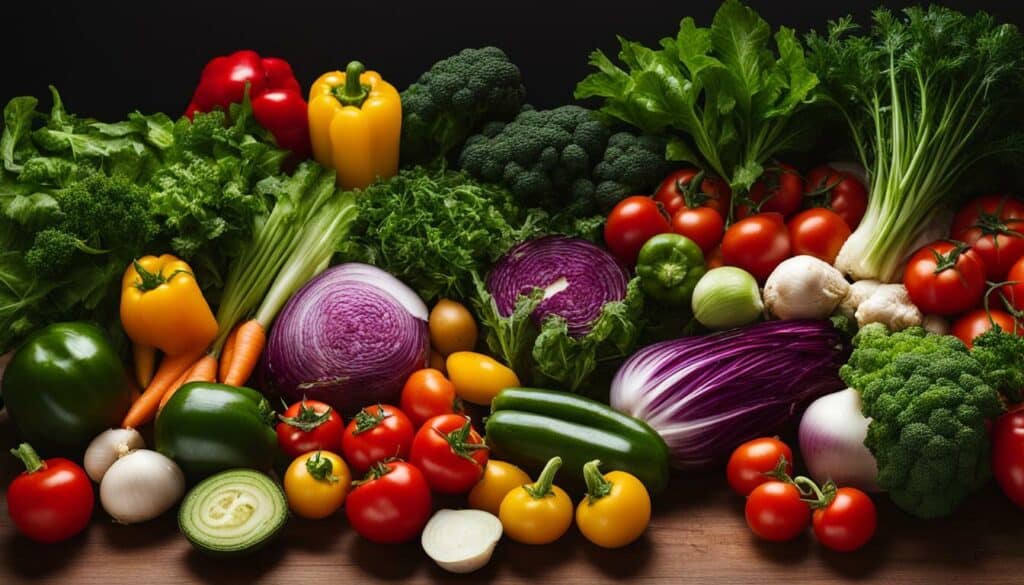
Properly preparing your ingredients can enhance the flavors and textures of your crockpot meal. Here are some tips to help you get started:
- Trim excess fat from meat: By removing any excess fat from meat, you can prevent your dish from becoming greasy or oily.
- Consider searing the meat: Searing your meat before adding it to the slow cooker can help lock in flavors and create a delicious crust.
- Cut vegetables evenly: To ensure even cooking, make sure to cut your vegetables into similar-sized pieces. This will prevent some pieces from being overcooked while others remain undercooked.
- Layer ingredients strategically: Layering your ingredients properly is important to ensure even heat distribution. Place root vegetables at the bottom, followed by meat, and then delicate ingredients on top.
- Season as you go: Instead of adding all of your seasonings at once, consider adding them in layers throughout the cooking process. This will allow the flavors to develop more fully.
Remember, the preparation process sets the foundation for a delicious crockpot meal. Take the time to properly prepare your ingredients, and you’ll be rewarded with a flavorful and satisfying dish!
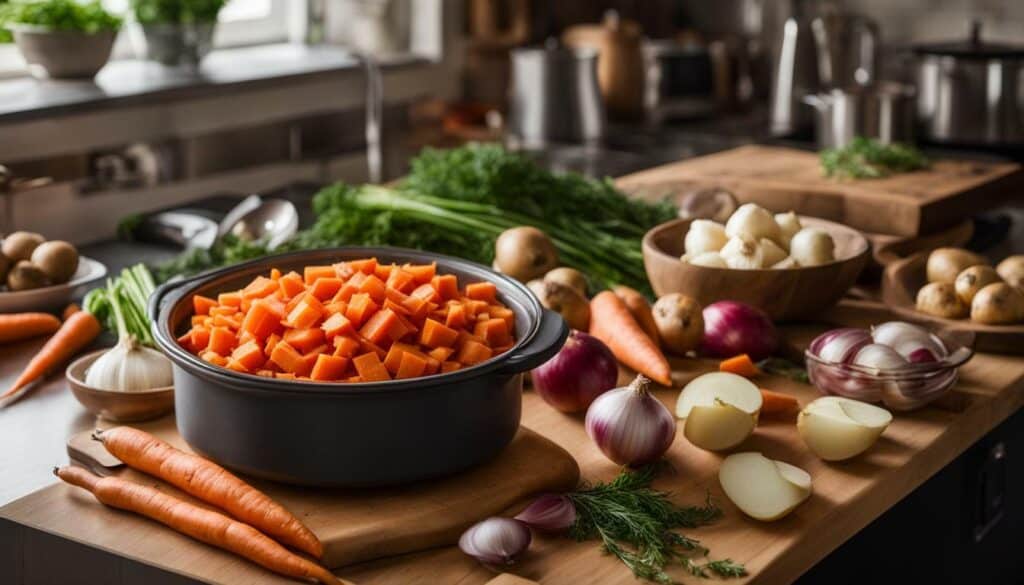
“Properly preparing your ingredients is an essential step in crockpot cooking. Taking the time to trim excess fat, sear meat, and layer ingredients strategically will result in a more flavorful and evenly cooked dish.” – Chef Emily Marshall
| Ingredient | Preparation Tip |
|---|---|
| Meat | Trim excess fat and consider searing before adding to the crockpot. |
| Vegetables | Cut into similar-sized pieces for even cooking. |
| Seasonings | Add in layers throughout the cooking process to develop flavors. |
By following these guidelines and taking the time to properly prepare your ingredients, you’ll be well on your way to creating delicious and flavorful meals with your crockpot.
Layering and Seasoning
Layering your ingredients strategically and seasoning them correctly can create a well-balanced and flavorful dish. When it comes to layering, it’s important to consider the cooking times and textures of the ingredients. Start by placing root vegetables like potatoes or carrots at the bottom of the slow cooker, as they take longer to cook. Then, add denser ingredients like meat or poultry on top, followed by more delicate items such as leafy greens or herbs.
Seasoning is another crucial step in slow cooker cooking. While it’s tempting to dump all the spices at once, it’s better to add them in layers to ensure even distribution of flavors. Start by seasoning the meat or poultry with salt and pepper. Then, add spices like paprika, cumin, or thyme to enhance the taste. If using dried herbs, add them at the beginning of the cooking process to allow the flavors to infuse. Fresh herbs, on the other hand, should be added towards the end to preserve their aroma and freshness.
Proper Layering and Seasoning Example
Imagine creating a delicious slow cooker chicken stew with a medley of vegetables. Start by layering the root vegetables, such as potatoes and carrots, at the bottom of the slow cooker. Next, place boneless chicken thighs on top of the vegetables. Season the chicken with salt, pepper, paprika, and a pinch of dried thyme. Add a layer of onion and garlic for extra flavor. Finally, pour in chicken broth or stock until the ingredients are covered.
| Layer | Ingredients | Seasoning |
|---|---|---|
| Bottom | Root vegetables (potatoes, carrots) | No seasoning |
| Middle | Chicken thighs | Salt, pepper, paprika, dried thyme |
| Top | Onion, garlic | No additional seasoning |
| Liquid | Chicken broth or stock | No additional seasoning |
By layering the ingredients in this specific order and seasoning them appropriately, you’ll be able to achieve a well-balanced and delicious chicken stew with tender meat and flavorful vegetables.
Remember, proper layering and seasoning are essential for getting the best results in your slow cooker dishes. Experiment with different ingredient combinations and seasonings to create your own signature recipes. Happy slow cooking!
Cooking Times and Temperatures
Understanding the cooking times and temperatures is key to achieving perfectly cooked meals in your crockpot. Slow cookers are designed to cook food over a long period of time at a low temperature, resulting in tender and flavorful dishes. Whether you’re cooking a hearty stew, a tender roast, or a flavorful soup, knowing the right cooking times and temperatures is essential.
When it comes to cooking times, it’s important to follow the recipe guidelines. Slow cookers typically have two settings: low and high. The low setting is generally preferred for most recipes, as it allows the flavors to develop slowly and ensures tender results. The high setting can be used for recipes that require quicker cooking times or for when you need to speed up the cooking process.
The cooking time for slow cooker recipes depends on the length of time the dish would normally take to cook, with adjustments for the slow cooker’s low and high settings. As a general rule, most recipes will take anywhere from 4 to 8 hours on the low setting, while the high setting can reduce the cooking time to 2 to 4 hours. It’s important to note that cooking times may vary depending on the size and thickness of the ingredients, so it’s always a good idea to check for doneness before serving.
To ensure even cooking, it’s important to layer the ingredients properly in the slow cooker. Place root vegetables, such as potatoes and carrots, at the bottom near the heat source, as they take longer to cook. Next, add your meat or protein, followed by any additional vegetables or ingredients. This layering technique allows for even heat distribution and ensures that all the ingredients cook at the same rate.
Slow Cooker Cooking Times Cheat Sheet
| Ingredient | Low Setting | High Setting |
|---|---|---|
| Chicken (boneless, skinless) | 6-8 hours | 3-4 hours |
| Beef (roast or stew meat) | 8-10 hours | 4-6 hours |
| Pork (roast or chops) | 8-10 hours | 4-6 hours |
| Vegetables (root vegetables) | 6-8 hours | 3-4 hours |
| Soups and stews | 6-8 hours | 3-4 hours |
By understanding the cooking times and temperatures, you can achieve perfectly cooked meals in your crockpot every time. Whether you’re a beginner or an experienced cook, following these guidelines will help you create delicious and tender dishes that are full of flavor.
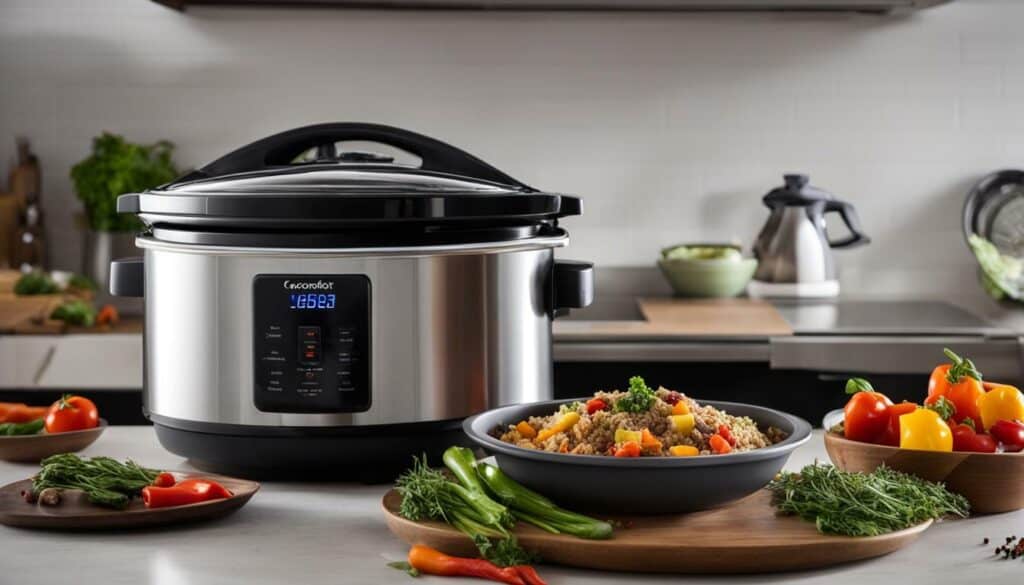
With a few simple additions and variations, you can elevate the flavors of your crockpot dishes and keep your meals interesting. Experimenting with different herbs, spices, and ingredients can transform a basic recipe into something truly extraordinary. Here are some flavor-enhancing ideas and creative variations to try:
1. Herb Infusions
Add depth and aroma to your slow-cooked meals by infusing herbs into the cooking liquid. Tie herbs like rosemary, thyme, and bay leaves together with kitchen twine for easy removal later. These herb bundles release their flavors slowly, enriching the dish with their aromatic goodness.
2. Ethnic Flair
Give your crockpot recipes an international twist by incorporating spices and ingredients from different cuisines. For example, add curry powder, ginger, and coconut milk to create a flavorful Indian-inspired curry, or use cumin, smoked paprika, and jalapenos for a Mexican-inspired chili.
3. Citrus Zest
The bright zest of citrus fruits can add a refreshing and tangy element to your slow-cooked meals. Grate the zest of oranges, lemons, or limes and add it to the dish during the last hour of cooking. The citrus flavor will infuse the entire dish, providing a burst of freshness.
| Flavor Enhancements | Variations |
|---|---|
| Herb Infusions | Ethnic Flair |
| Citrus Zest | Spice Blends |
| Savory Sauces | Sweet and Savory Combos |
These flavor enhancements and variations will take your crockpot cooking to the next level. By experimenting with different combinations, you can customize your dishes to suit your taste preferences and keep your meals exciting. Remember to adjust the seasonings and spices according to your personal preference and enjoy the flavors that slow cooking brings to your table.
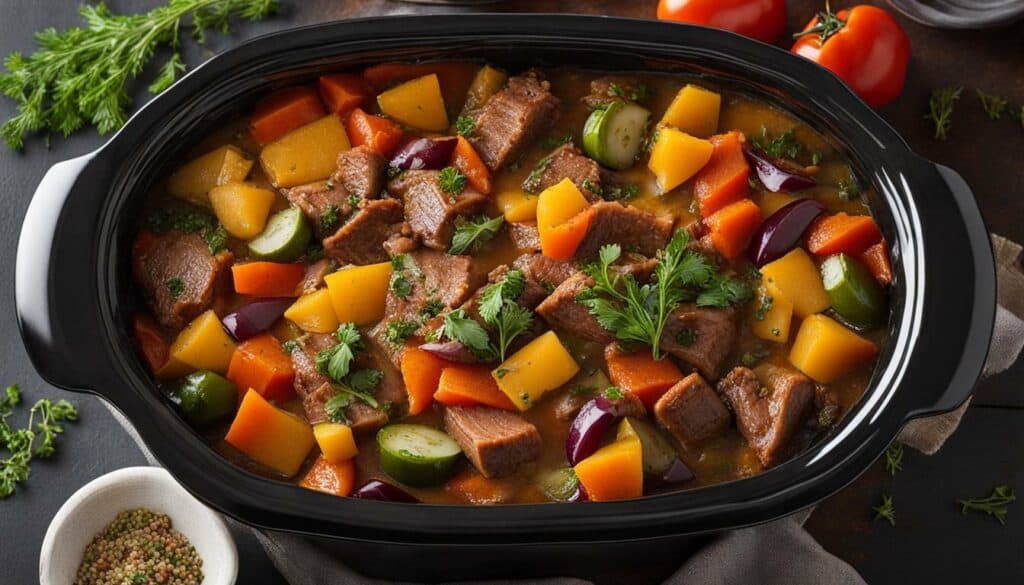
Even though crockpot cooking is relatively easy, there are some common pitfalls to watch out for to ensure the best results. Here are some mistakes to avoid when using a slow cooker:
- Overcooking: Leaving the slow cooker on high for too long can overcook the food, resulting in a mushy texture and loss of flavor. It is recommended to follow the cooking times specified in the recipe and adjust accordingly.
- Using the wrong cuts of meat: Lean cuts of meat may dry out during slow cooking, so it is best to use marbled and fatty cuts or tough cuts with collagen and connective tissue. These cuts become tender and flavorful over time.
- Adding ingredients at the wrong time: Some ingredients, such as fresh herbs and dairy products, should be added towards the end of the cooking process to preserve their flavors and textures. Adding them too early can lead to a loss of freshness or curdling.
- Not layering properly: Layering the ingredients properly in the slow cooker ensures even cooking. Root vegetables should be placed at the bottom, closer to the heat source, while more delicate items should be towards the top. This allows for even heat distribution and prevents overcooking or undercooking.
- Not adjusting seasonings: Adding too much salt or seasoning at the beginning can result in an over-seasoned dish. It is better to start with a small amount and adjust the seasonings towards the end of the cooking process to taste.
By avoiding these common mistakes, you can ensure that your crockpot meals turn out delicious and flavorful every time. Remember to follow the recipe instructions, choose the right cuts of meat, and pay attention to layering and seasoning for optimal results.
| Mistake | Solution |
|---|---|
| Overcooking | Follow the recommended cooking times and adjust accordingly. |
| Using the wrong cuts of meat | Choose marbled and fatty cuts or tough cuts with collagen and connective tissue. |
| Adding ingredients at the wrong time | Add fresh herbs and dairy products towards the end of the cooking process. |
| Not layering properly | Place root vegetables at the bottom and delicate items towards the top. |
| Not adjusting seasonings | Start with a small amount of seasoning and adjust to taste. |
Conclusion
Cooking with a crockpot can be a time-saving and convenient way to prepare delicious meals, as long as you follow these tips and guidelines. Slow cooking allows for flavors to develop and meats to become tender, resulting in mouthwatering dishes. To ensure successful crockpot cooking, it is important to properly prepare your ingredients, choose the right cuts of meat, and layer them in the crockpot in the correct order. It is also crucial to follow the recommended cooking times and temperatures for different recipes.
Remember to sear your meat before adding it to the slow cooker to maximize flavor. Choose marbled or fatty cuts of meat, or tough cuts with collagen and connective tissue, as they will become tender over time. Be cautious when cooking chicken with the skin on, as it may end up mushy and rubbery. If desired, you can broil the chicken after slow cooking to crisp up the skin.
When it comes to seasoning, start with a small amount of salt at the beginning and adjust later, as adding too much at the start can result in over-seasoned food. Add fresh herbs towards the end of the cooking process to preserve their flavors, while dried herbs can be added in the beginning. Ensure that the meat is fully covered in liquid and reduce the liquid by about one-third. Proper layering of ingredients is vital for even cooking, with root vegetables at the bottom and more delicate items towards the top.
Lastly, resist the temptation to lift the lid and stir during the cooking process, as this can cause heat loss and increase the cooking time. Only open the lid when necessary and do so quickly. It is recommended to grease the slow cooker for certain recipes to prevent sticking, especially for desserts. Follow the recipe’s specific cooking times and settings, and be mindful not to constantly check or lift the lid, as this will prolong the cooking process.
By following these crockpot cooking tips, you can create a variety of delicious and easy meals. Whether you’re making budget-friendly dishes, vegetarian or vegan options, or even slow cooker desserts, the possibilities are endless. So, grab your crockpot and starting enjoying the convenience and flavors of slow cooking today!
FAQ
Q: Can I just throw a bunch of ingredients in the crockpot without much preparation?
A: Yes, it is possible to throw ingredients in the crockpot, but there are some guidelines to follow to ensure the best results. Proper preparation, ingredient selection, layering, and cooking times are key to maximizing flavor and achieving tender, delicious dishes.
Q: What are some tips for successful crockpot cooking?
A: To ensure successful crockpot cooking, it is recommended to sear meat before adding it to the slow cooker to maximize flavor, choose marbled and fatty cuts of meat or tough cuts with collagen and connective tissue, and avoid over-seasoning by adding a small amount of salt at the beginning and adjusting later. It is also important to layer the ingredients properly, fill the slow cooker to the right level, and follow the cooking times and settings specified in the recipe.
Q: How do I choose the right ingredients for crockpot cooking?
A: When it comes to crockpot cooking, marbled and fatty cuts of meat or tough cuts with collagen and connective tissue are ideal as they become tender over time. Chicken with the skin on may end up mushy and rubbery, but it can be broiled after cooking to crisp it up. It is also important to select fresh herbs to add towards the end of the cooking process, while dried herbs can be added in the beginning.
Q: What should I do to prepare the ingredients before putting them in the crockpot?
A: To prepare the ingredients for crockpot cooking, it is best to trim excess fat from the meat to prevent greasiness and oiliness in the dish. Additionally, fresh herbs should be chopped, and any vegetables should be washed and cut into appropriate sizes. It is also recommended to prepare the ingredients the night before and refrigerate them until ready to cook.
Q: How should I layer and season the ingredients in the crockpot?
A: Proper layering of ingredients is important for even cooking. Root vegetables should be placed at the bottom, followed by meat, and then more delicate items towards the top. Seasoning should be done with a small amount of salt at the beginning and can be adjusted later. Fresh herbs should be added towards the end of the cooking process, while dried herbs can be added in the beginning.
Q: What are the optimal cooking times and temperatures for crockpot recipes?
A: The cooking time for crockpot recipes depends on the length of time the dish would normally take to cook, with adjustments for the slow cooker’s low and high settings. It is generally recommended to cook on the low setting to extract flavors, but following the specific cooking times and temperatures provided in the recipe is important for achieving the best results.
Q: How can I enhance the flavors and add variety to my crockpot meals?
A: To enhance the flavors of your crockpot meals, you can sear meat before adding it to the slow cooker, use flavorful marinades or sauces, add spices or herbs, or even try different types of liquids like broth, wine, or beer. You can also experiment with various ingredients and variations of your favorite recipes to add variety to your crockpot cooking routine.
Q: What are some common mistakes to avoid when using a crockpot?
A: Some common mistakes to avoid when using a crockpot include lifting the lid and stirring during cooking, as it can cause heat loss and increase the cooking time. It is also important not to overfill the slow cooker or under-season the dish. Additionally, adding dairy products too early or using too much liquid can result in undesirable textures or flavors.
Q: What is the main takeaway from this article?
A: The main takeaway is that while it is generally safe to throw a bunch of ingredients in the crockpot, there are some guidelines to follow for the best results. Proper preparation, ingredient selection, layering, and cooking times are key to maximizing flavor and achieving tender, delicious dishes.
Is Eating Burnt Food from a Crockpot Harmful to Your Health?
Is eating burnt food from a crockpot harmful to your health? It is crucial to be aware of the potential eating burnt food health risks. Consuming burnt food can lead to the formation of harmful compounds like acrylamide and polycyclic aromatic hydrocarbons (PAHs), which may increase the risk of cancer and other health problems. It is advised to avoid consuming burnt food to maintain optimal health.

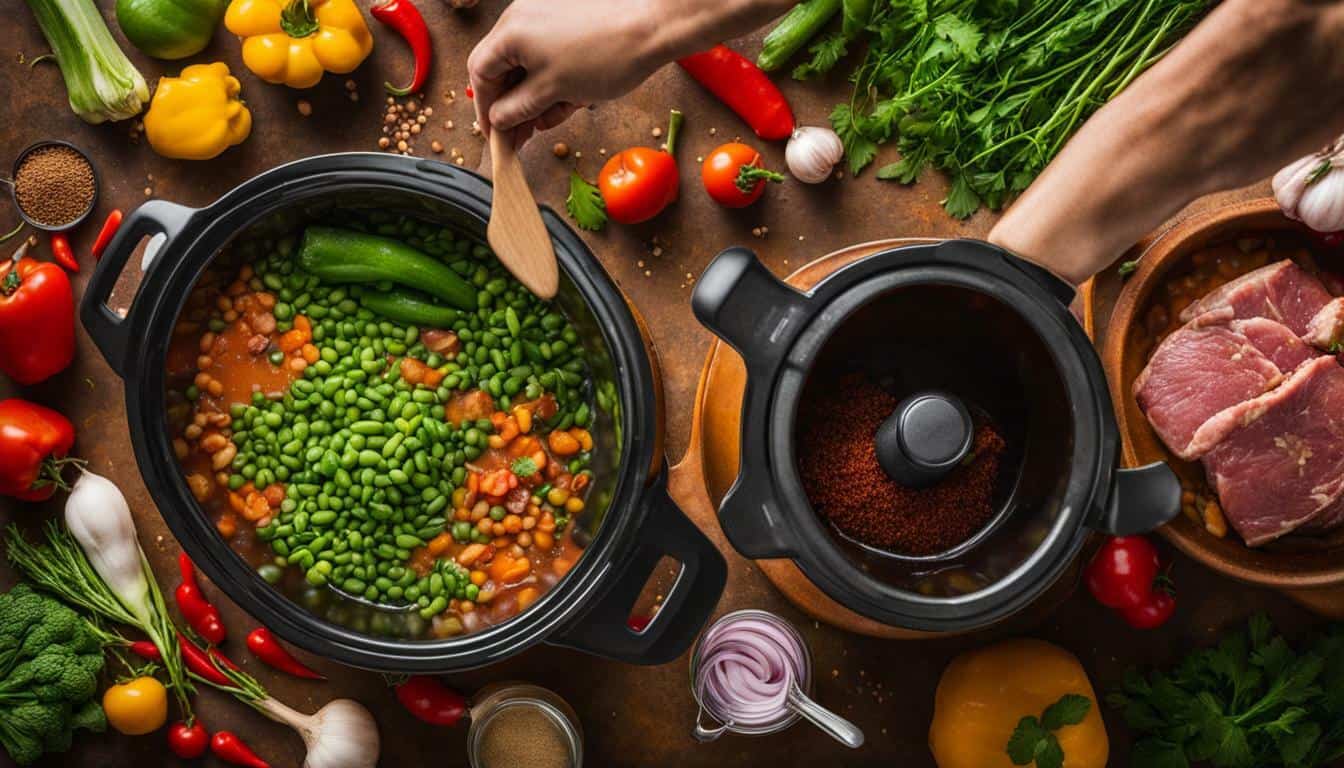
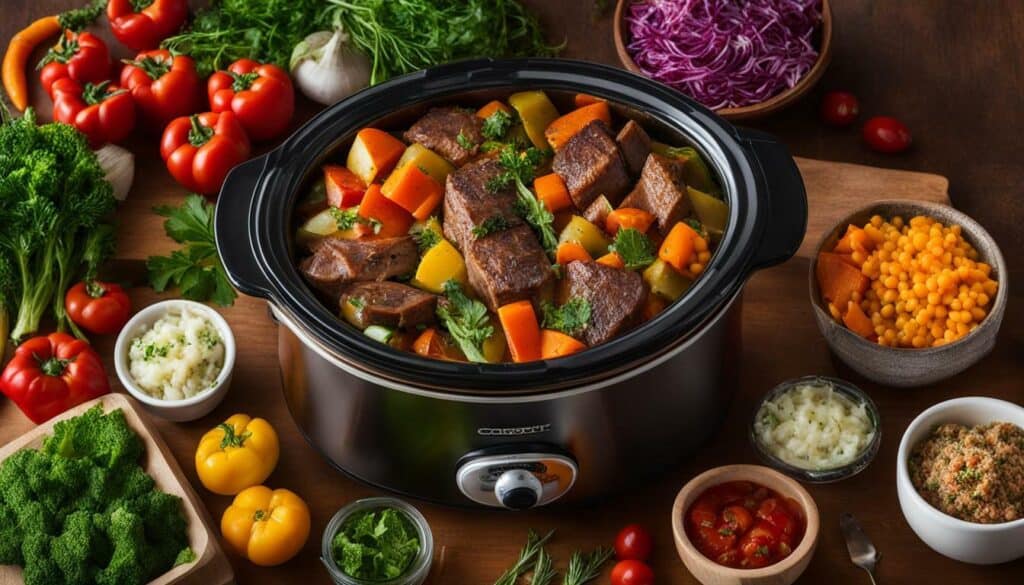




Leave a Reply